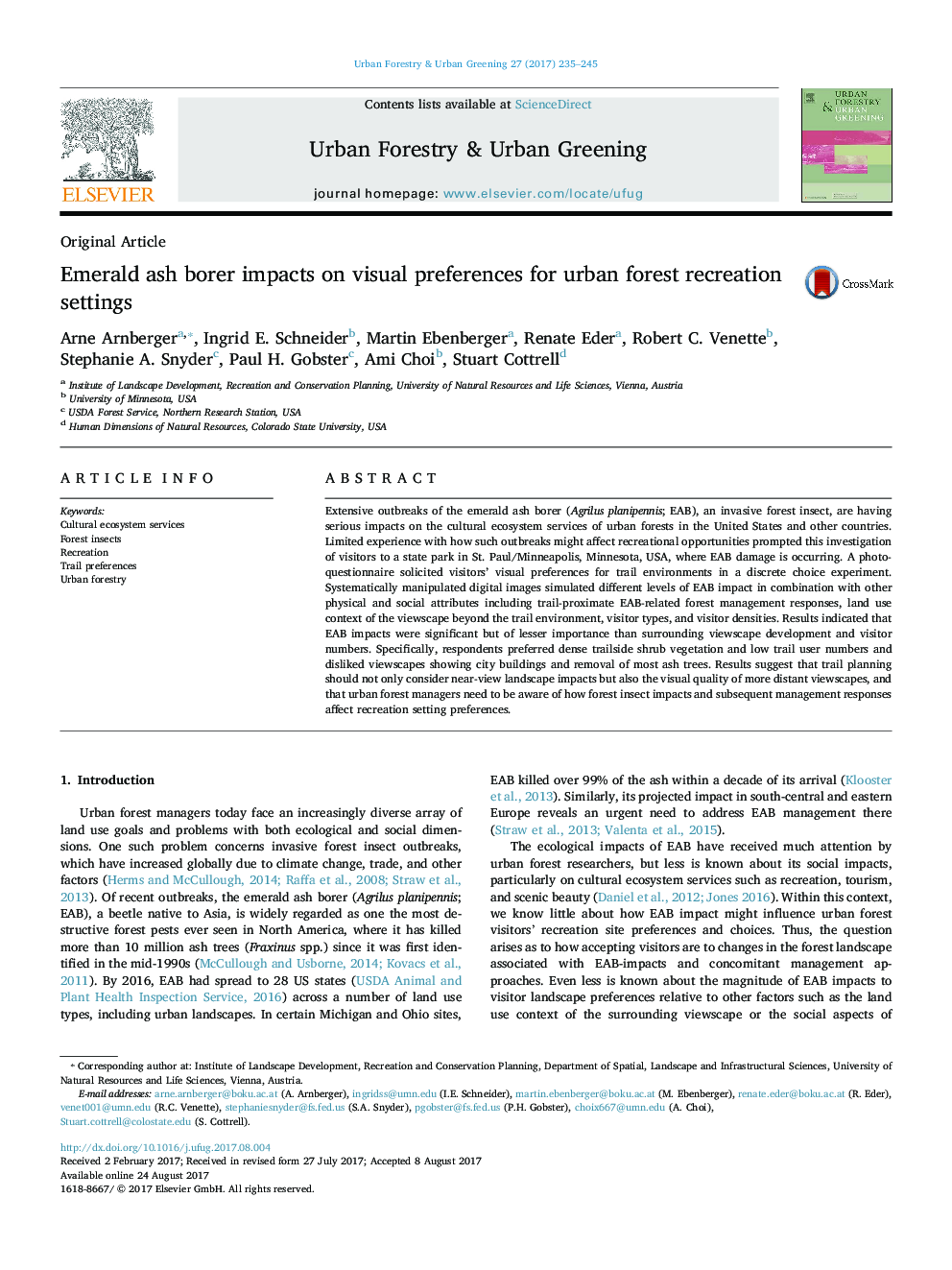| کد مقاله | کد نشریه | سال انتشار | مقاله انگلیسی | نسخه تمام متن |
|---|---|---|---|---|
| 6461740 | 1421863 | 2017 | 11 صفحه PDF | دانلود رایگان |
- Emerald ash borer (EAB) is threatening cultural ecosystem services of urban forests.
- Forest visitors preferred trails with dense trailside shrub vegetation and without EAB impacts or removal of most ash trees.
- Visitors also preferred low trail user numbers and viewscapes without city buildings.
- Viewscapes and user numbers had greater effects on preferences than forest conditions.
- Trail planning should consider both near and far-view landscape conditions.
Extensive outbreaks of the emerald ash borer (Agrilus planipennis; EAB), an invasive forest insect, are having serious impacts on the cultural ecosystem services of urban forests in the United States and other countries. Limited experience with how such outbreaks might affect recreational opportunities prompted this investigation of visitors to a state park in St. Paul/Minneapolis, Minnesota, USA, where EAB damage is occurring. A photo-questionnaire solicited visitors' visual preferences for trail environments in a discrete choice experiment. Systematically manipulated digital images simulated different levels of EAB impact in combination with other physical and social attributes including trail-proximate EAB-related forest management responses, land use context of the viewscape beyond the trail environment, visitor types, and visitor densities. Results indicated that EAB impacts were significant but of lesser importance than surrounding viewscape development and visitor numbers. Specifically, respondents preferred dense trailside shrub vegetation and low trail user numbers and disliked viewscapes showing city buildings and removal of most ash trees. Results suggest that trail planning should not only consider near-view landscape impacts but also the visual quality of more distant viewscapes, and that urban forest managers need to be aware of how forest insect impacts and subsequent management responses affect recreation setting preferences.
Journal: Urban Forestry & Urban Greening - Volume 27, October 2017, Pages 235-245
